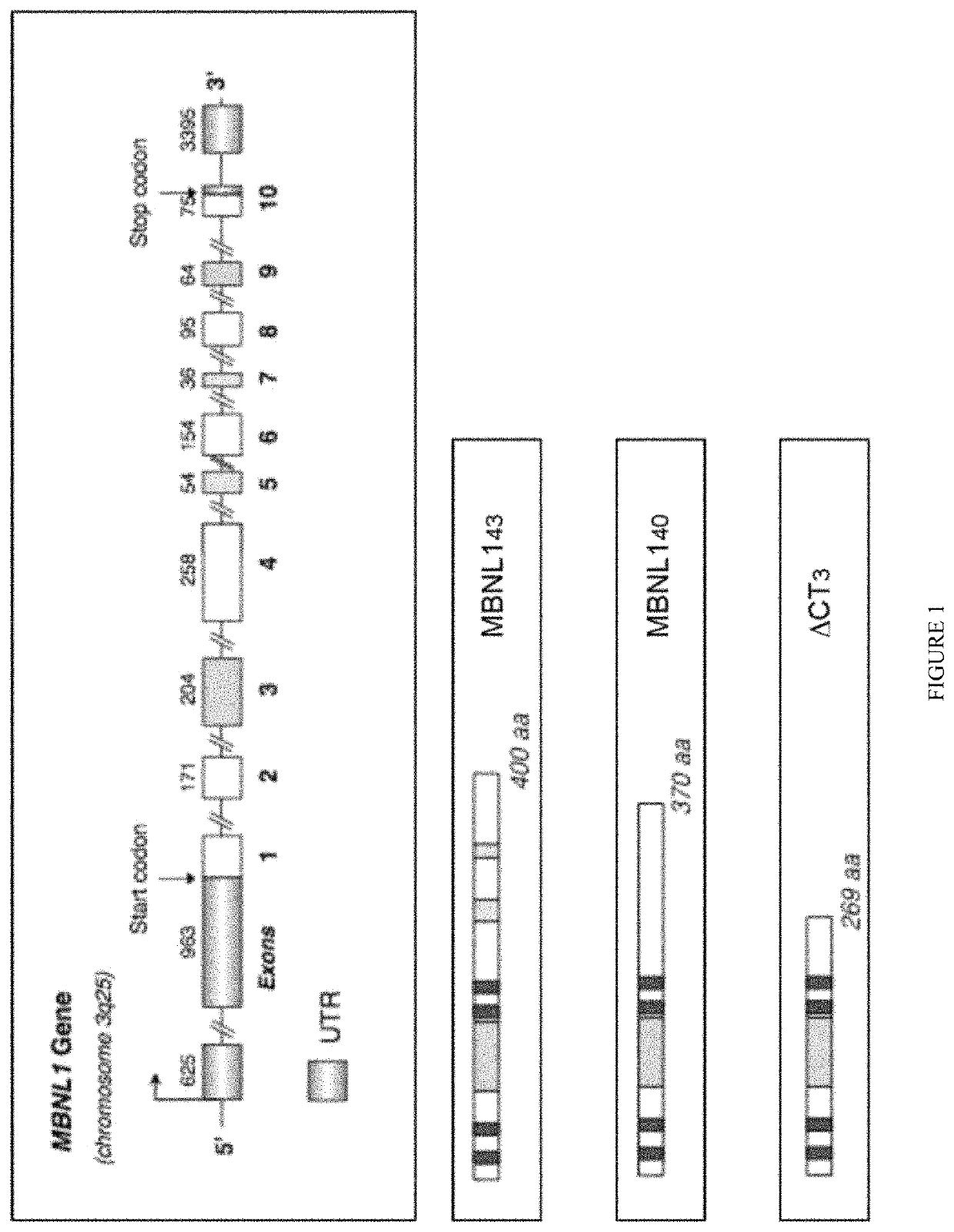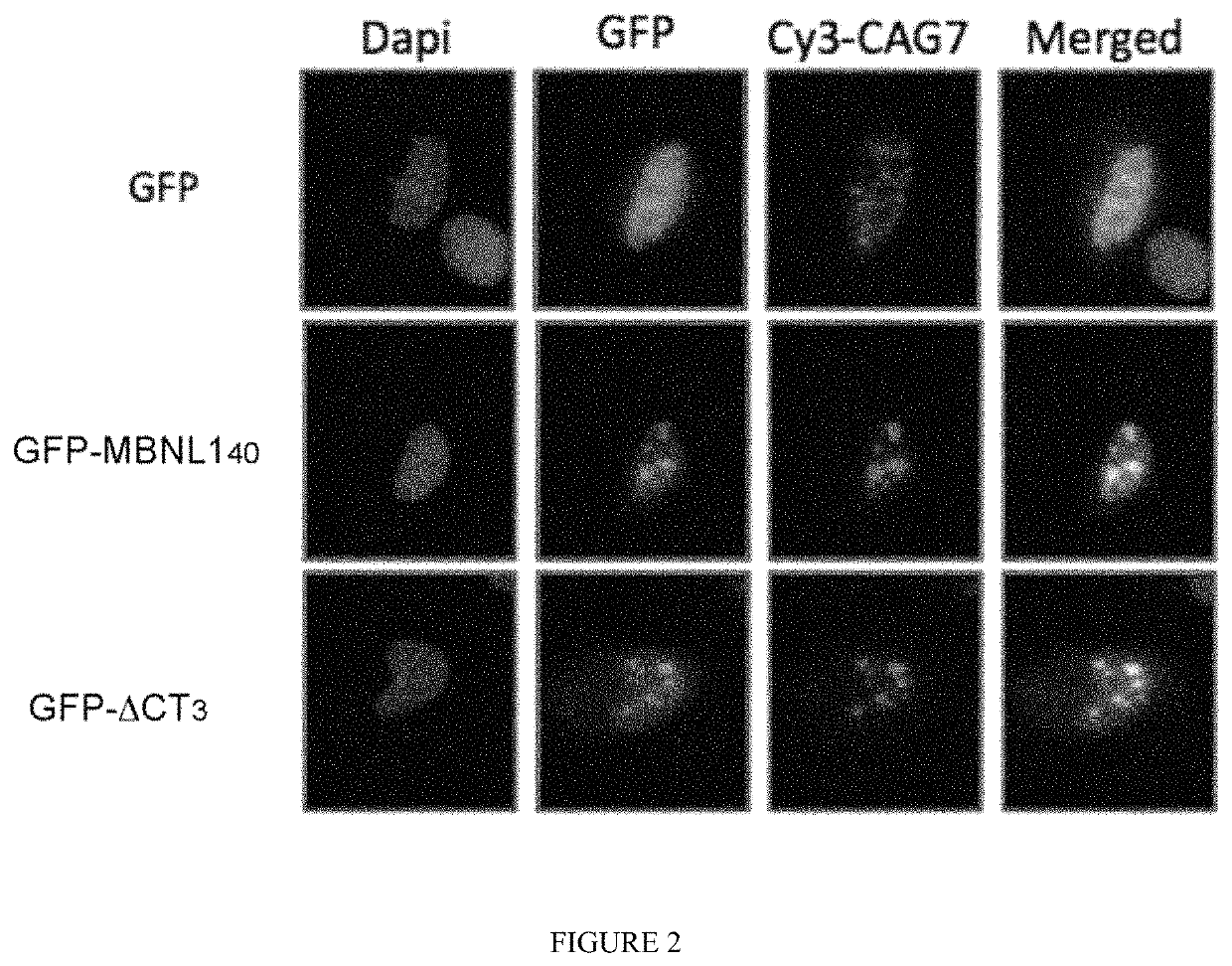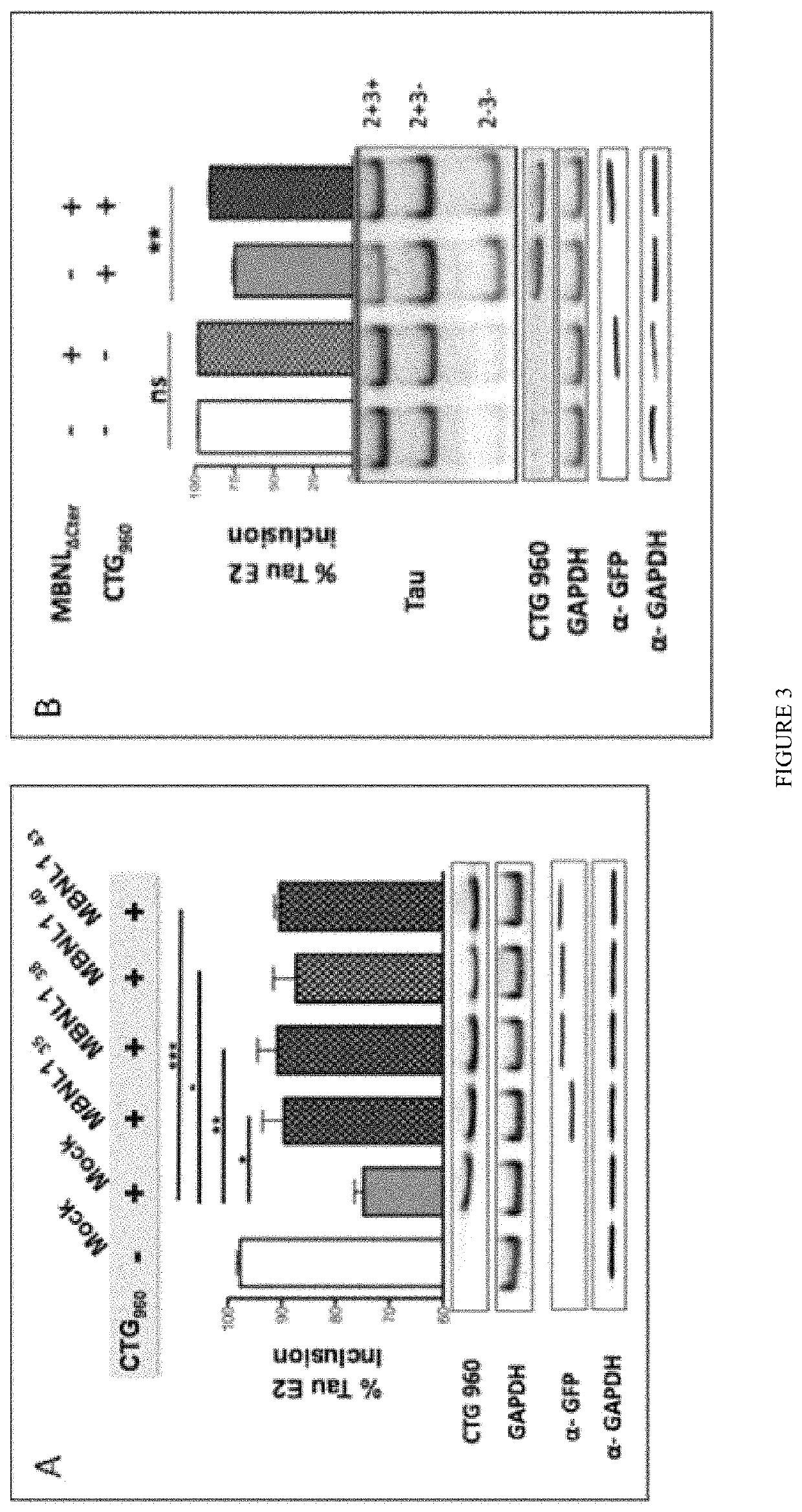Treatment of myotonic dystrophy
a myotonic dystrophy and myotonic nerve technology, applied in the field of compositions and methods for treating myotonic nerves, can solve problems such as loss of function, and achieve the effect of counteracting cugexp-rna toxicity
- Summary
- Abstract
- Description
- Claims
- Application Information
AI Technical Summary
Benefits of technology
Problems solved by technology
Method used
Image
Examples
examples
[0053]Material and Method
[0054]Plasmids and Viral Production
[0055]The plasmid containing the 3′UTR of DMPK with 960 interrupted CTGs was a minigene vector also under the control of the CMV promoter (kindly gift from T. Cooper, Baylor College of Medecine, Houston Tex., USA). The sequence of MBNL1 full-length variant constructs and truncated ΔCT3 used in this study were previously described (Tran et al. 2011). NES was derived from the REV protein of HIV (Fischer et al. 1995) and fused to the ΔCT3 construct. MBNL1, ΔCT3 and ΔCT3-NES splicing activity was assessed using three minigenes previously described: the RTB300 minigene containing exon 5 of human cTNT (hcTNT); the INSR minigene containing exon 11 of human insulin receptor and the pSVIRB / Tau minigene containing exons 2 and 3. All plasmids DNA were double-strand sequenced at GATC Biotech (France) and purified using the Nucleobond® AX endotoxin free kit (Macherey Nagel, Germany). The cDNA coding for GFP-ΔCT3 or for the GFP protein c...
PUM
| Property | Measurement | Unit |
|---|---|---|
| compositions | aaaaa | aaaaa |
| size | aaaaa | aaaaa |
| affinity | aaaaa | aaaaa |
Abstract
Description
Claims
Application Information
 Login to view more
Login to view more - R&D Engineer
- R&D Manager
- IP Professional
- Industry Leading Data Capabilities
- Powerful AI technology
- Patent DNA Extraction
Browse by: Latest US Patents, China's latest patents, Technical Efficacy Thesaurus, Application Domain, Technology Topic.
© 2024 PatSnap. All rights reserved.Legal|Privacy policy|Modern Slavery Act Transparency Statement|Sitemap



